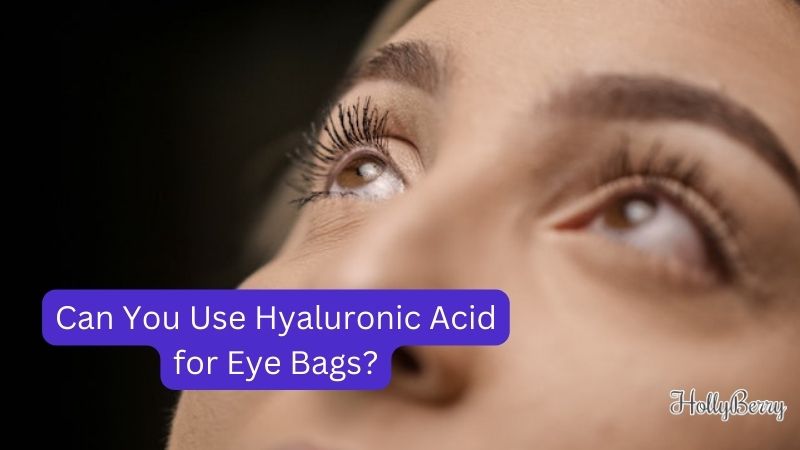
Can You Use Hyaluronic Acid for Eye Bags?
Share

Eye bags can be a frustrating and often stubborn cosmetic concern. As we age, our skin loses its elasticity, and various factors can contribute to the appearance of under-eye bags.
Hyaluronic acid has gained popularity in recent years for its numerous skincare benefits, but can it be effective in treating eye bags?
In this article, we will explore the benefits of hyaluronic acid, its potential role in addressing eye bags, and alternative treatments that may also help in achieving a refreshed appearance.
What is Hyaluronic Acid?
Structure and Function
Hyaluronic acid (HA) is a naturally occurring substance in the body that plays a crucial role in maintaining skin hydration and elasticity.
It is a glycosaminoglycan, a type of sugar molecule that can attract and retain large amounts of water, contributing to the plump and supple appearance of the skin.
Benefits in Skincare
The skincare industry has embraced hyaluronic acid for its ability to retain moisture, promote collagen production, and enhance skin's texture.
HA is commonly found in serums, creams, and injectable dermal fillers, offering both short-term and long-term benefits.
Causes of Eye Bags
Aging and Skin Laxity
As we age, the skin loses collagen and elastin, causing it to become thinner and less elastic. This process, along with the natural weakening of facial muscles, can lead to the formation of eye bags.
Fluid Retention
Factors such as high salt intake, allergies, or lack of sleep can cause fluid to accumulate under the eyes, resulting in puffiness and swelling.
Genetics
Some individuals may have a genetic predisposition to develop eye bags due to their inherited facial structure or the way their body stores fat.
Hyaluronic Acid and Eye Bags
Topical Hyaluronic Acid
Topical hyaluronic acid products, such as serums and creams, can help to hydrate and plump the skin, reducing the appearance of fine lines and wrinkles.
However, these products may have limited effectiveness in treating eye bags, as they cannot address the underlying structural issues that contribute to their formation.
Injectable Hyaluronic Acid
Hyaluronic acid-based dermal fillers, like Restylane and Juvederm, are a popular non-surgical option for reducing the appearance of eye bags.
When injected by a skilled professional, these fillers can help to restore lost volume and smooth out the under-eye area, providing a more youthful and refreshed appearance.
Alternative Treatments for Eye Bags
Lifestyle Changes
Improving your sleep, reducing salt intake, and staying hydrated can help minimize fluid retention and reduce the appearance of eye bags.
Cold Compresses
Applying cold compresses or cooled tea bags to the under-eye area can help to constrict blood vessels and reduce puffiness.
Cosmetic Procedures
For more severe or persistent eye bags, cosmetic procedures such as lower eyelid surgery (blepharoplasty) or laser resurfacing may be necessary to achieve desired results.
My Conclusion
Hyaluronic acid, in its topical form, may provide limited relief for eye bags due to its hydrating properties.
However, hyaluronic acid-based dermal fillers can offer a more effective solution by addressing the structural issues that contribute to the formation of eye bags.
Additionally, lifestyle changes and other treatments may also help to improve the appearance of under-eye bags.
It is essential to consult with a qualified professional to determine the best course of action for your specific needs

